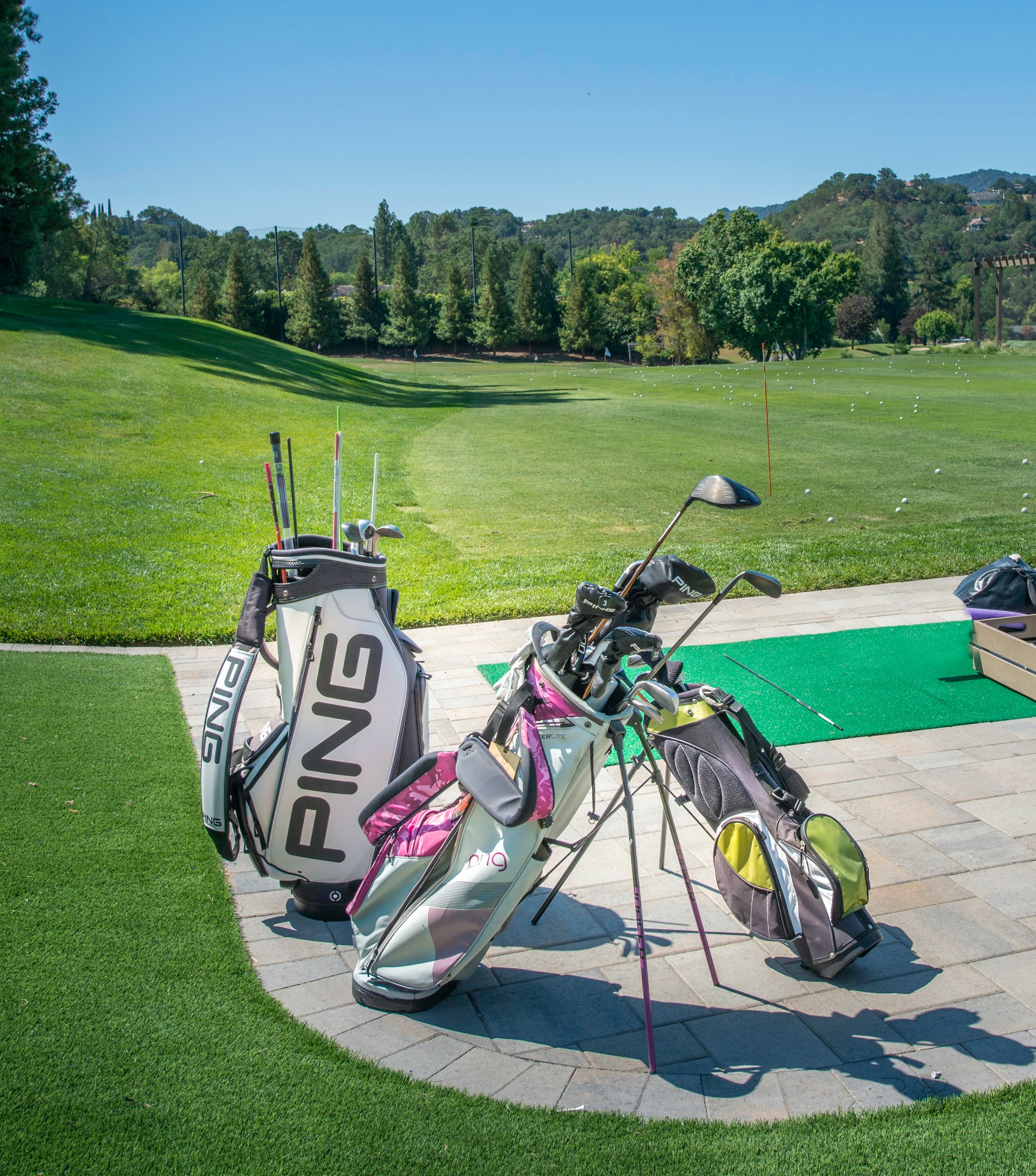Ever seen a guy on the driving range who just can’t seem to hit the ball? Or maybe you are that guy (or girl). Odds are he’s overlooking a crucial component of the golf swing: connectivity. A connected golf swing delivers power and consistency to each shot. Below we’ll give you a better idea of what it is and provide a few steps to help you master connectivity and stay connected throughout the whole golf swing.
What is a Connected Golf Swing?
In short, a connected golf swing means your arms flow with the rotation of your body. When your whole body is in sync, your body and your hands hit the ball together, allowing you to consistently deliver a powerful strike. The body and all the movements must operate in harmony in order to achieve the ideal hit.
Steps to a Staying Connected in a Golf Swing
Step 1: Setup
At setup, your hands and arms should make a “v” shape. Be careful not to let your arms veer ahead or behind your body line. This will break the “v” shape and make a connected swing rather difficult.
Watch Out: Try to Avoid These Common Mistakes
There are two primary mistakes that amateur golfers make when it comes to connectivity at the setup.
- Left Shoulder Too Low, Weight Too Far Forward
A forward lean throws your arms off center and causes unwanted separation of the arms from the body at the top of the backswing. Stay centered with your weight evenly distributed between both feet for the best results. This is key for keeping your arms connected in the golf swing.
- Too Much Weight On Back Foot, Head Tilted
This can lead to trouble for a few reasons. First, overloading the back foot can make for an awkward backswing. Your arms won’t be as extended as they should be (in other words you’ll have crocodile arms). Second, as you follow through the rear loaded weight will separate your arms from your body enough that you’ll either come out on top of the ball at impact or suffer a loss of ball control. What’s more, if your head is tilted too far one direction your arms become misaligned with your sternum which can drastically affect your accuracy.
Step 2: Backswing
Then comes the backswing. The “v” shape should be maintained throughout the backswing as well as you keep your arms connected in the golf swing. As your wrist hinges in the backswing your hands should still be pointing towards center– about where your sternum is.
Step 3: Downswing
Begin the downswing. The “v” shape should remain in-tact through impact. Your chest and arms should be facing the target at the finish position.
Why Connectivity Matters
Arms with no hips is like trying to drive a car without tires. It won’t really get you anywhere. When it comes to connectivity in the golf swing, rotation is key. A good rule of thumb is try and rotate your body 45 degrees and your arms 90 degrees. This will help you maintain optimal power throughout the swing.
Are you having trouble pinning down where your’e going wrong with this movement? Allow us to introduce ourselves. Gears touts the most powerful, precise, golf swing motion capture system in the world and our users are frequently awestruck by the clarity and practicality of our analytics. With our system you can not only compare your rotation and connectivity with a pro’s, but you can enjoy a glorious 3D rendering of every angle and speed of your body movement so you know exactly where you should be improving. Want to try it out? We’d love to show you around.
BONUS: Awesome Drill for a Connected Golf Swing
This drill reinforces the idea of creating a “v” shape and maintaining it throughout the setup, backswing, impact, and downswing phases. Work on this drill and you’ll become a pro at staying connected in your golf swing.
- Grab two tees
- Place one under each armpit
- Setup (it should feel like your arms are on top of your body)
- Perform a 1/4 swing, keeping the tees under your armpits
- Perform a half swing
- Perform a 3/4 swing
- Repeat until you can complete the drill without losing a tee
Final Thoughts
There’s no doubt that correcting bad habits can be a headache. But with enough focused practice you can fine tune a better connected golf swing in no time. Happy golfing!




